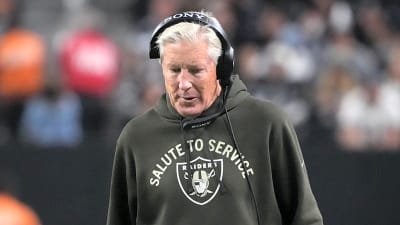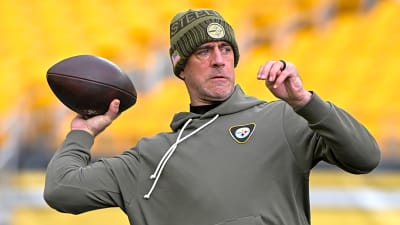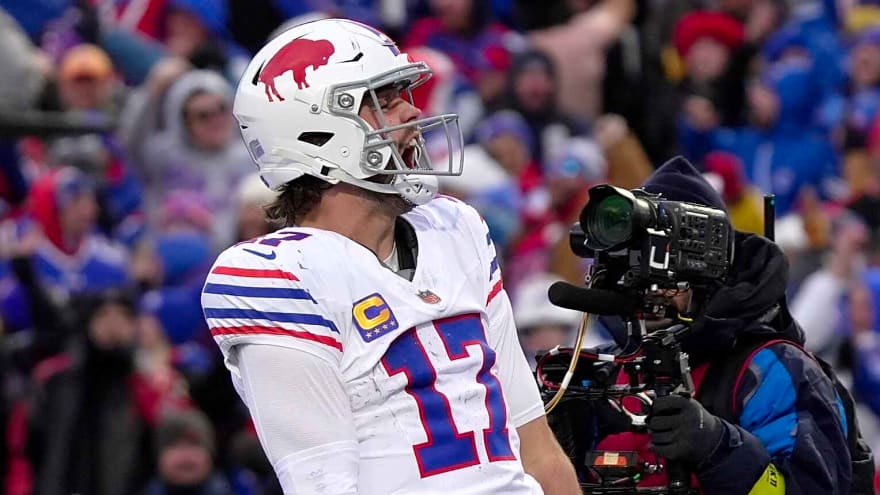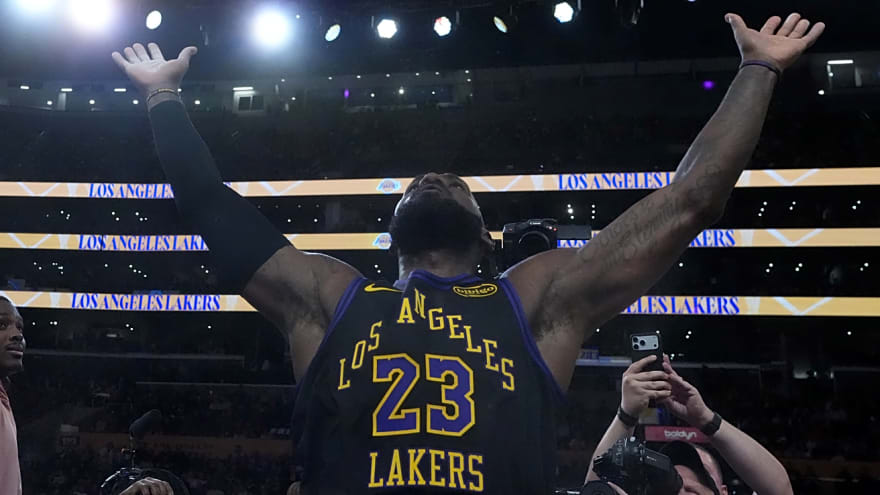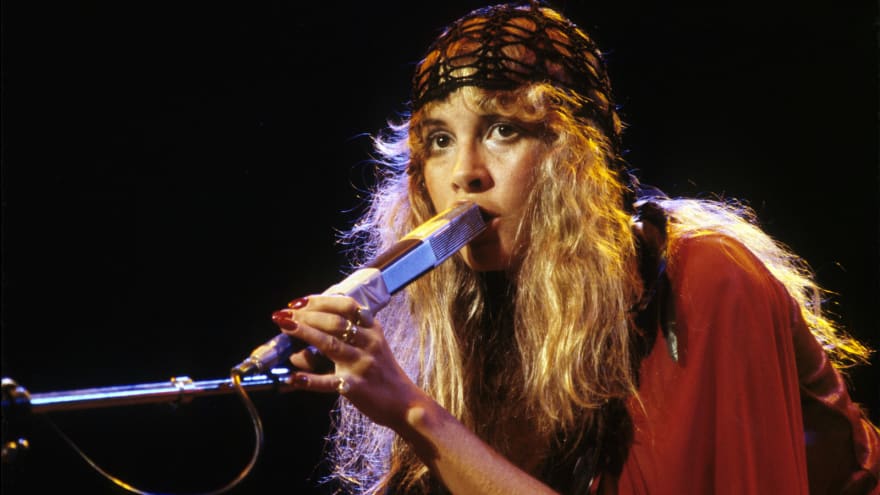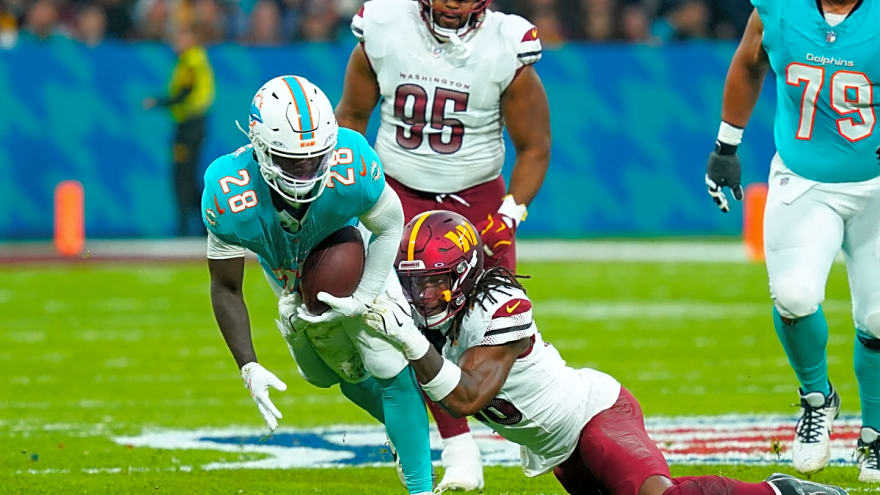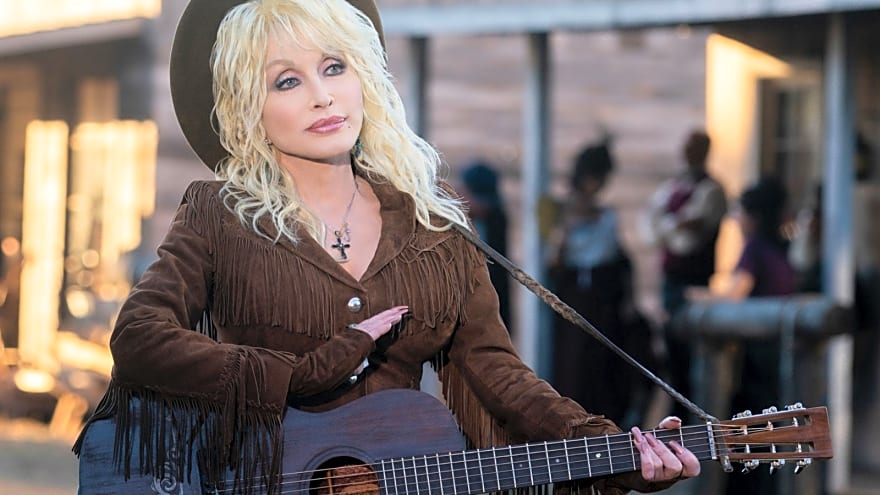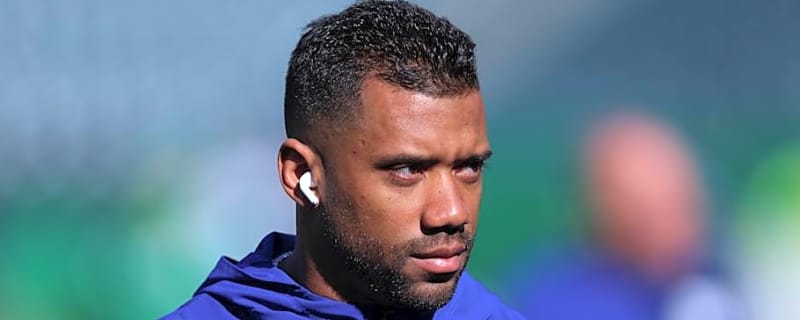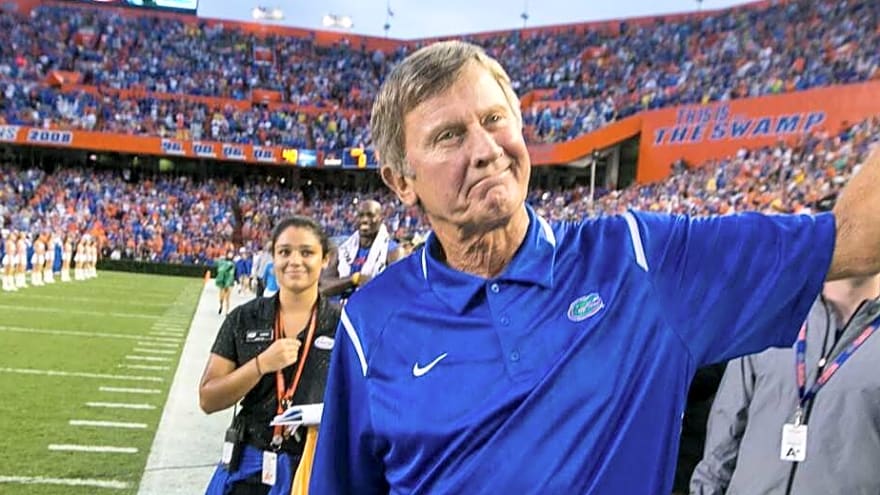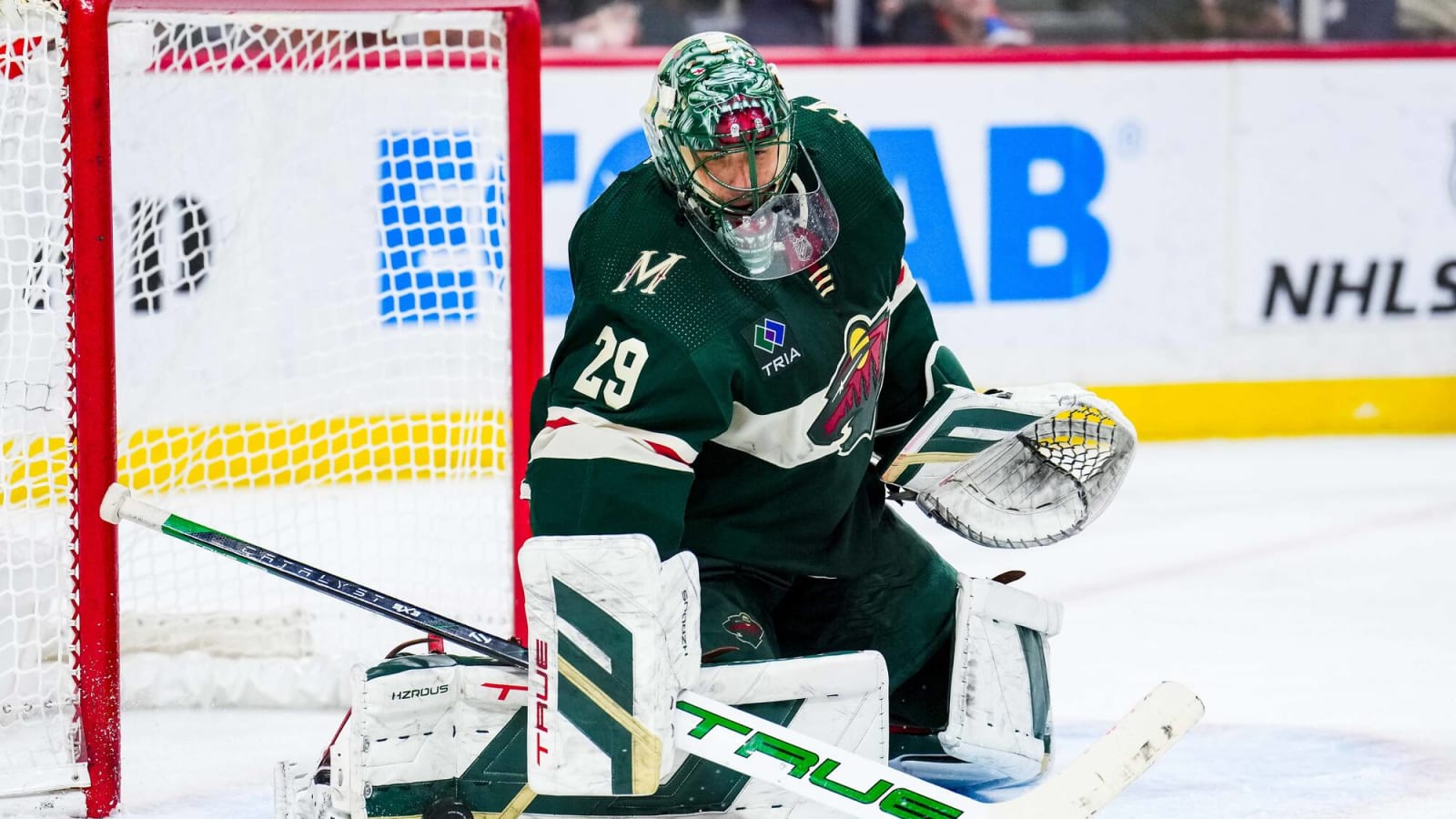
Listen, I’m not trying to say that a Day 2 draft pick is worth more than riding into the playoffs with Marc-Andre Fleury. The future Hall of Fame goalie is an NHL legend and a renowned personality that anybody would want on their team. Aside from that, it’s always better to sneak into the playoffs with a chance to make a deep run rather than lose a season to try to get better draft position.
On the other hand, trading Fleury makes a lot of sense – for the Wild and Fleury.
Fleury isn’t likely to perform at his legendary standard if Minnesota opens a competitive window next season or beyond. He’s 39 years old, performing below average in save percentage (ranked 45th) and goals-against average (34th).
Some of that is influenced by Minnesota’s questionable play in front of him this season, but the analytics that isolates goaltending from defense don’t indicate a turnaround. At five-on-five, Fleury is 22nd out of 64 goalies who have played 10 games in goals-saved above expected (GSAx). Statisticians designed that metric to credit goalies who save more high-danger chances. Worse yet, Fleury is 63rd out of 64 in GSAx on the penalty kill.
Fleury’s performance could suddenly decline as he nears 40, making him a risky bet to bring back as a free agent next year. Fleury and the Wild are on different timelines. Perhaps that wasn’t true at the start of this season. But due to a poor start and a rash of injuries, Minnesota is not in a position to give Fleury the season he deserves this late in his legendary career.
Minnesota must perform like a top-five team for the rest of this season to make the playoffs. Historically, that performance would earn the Wild the 8th seed and the right to play a seven-game series against the best team in the Western Conference.
On January 17, The Athletic predicted Minnesota had only a 28% chance to qualify for the playoffs. That was much higher than other analytical sites, partially because that model can adjust for the return of injured players like Kirill Kaprizov, Jonas Brodin, and Filip Gustavsson without punishing the team for the games it played without them. That was before news broke that captain Jared Spurgeon will get hip and back surgery and is out for the season.
In the middle of January, Flower probably relishes the challenge of an uphill fight to get into the playoffs. But things could look different by the March 8 trade deadline.
It’s important to note that Fleury’s contract includes a no-trade clause (NTC), meaning he can veto a trade if he doesn’t like the destination. That could reduce Minnesota’s return. On the other hand, Fleury most likely wants to be traded to a contender, so the NTC may not be an obstacle. That’s entirely Fleury’s decision.
But if a deal makes sense for Fleury, why would it make sense for the Wild? The return likely wouldn’t be astounding. The Chicago Blackhawks traded Fleury to Minnesota for a conditional second-round pick in March 2022, which had the chance to turn into a first-rounder if Minnesota won two playoff rounds. Chicago also retained $3.5 million of salary. Two years older, it’s safe to assume that Fleury would net less than that return -- perhaps something like a third-round pick.
That return isn’t worth it for Minnesota to blow up its goaltending tandem and endure months of tanking. It’s still not worth it if it gains the Wild a few slots worth of draft position. On the other hand, it may make a lot of sense for Minnesota’s goaltending tandem in 2024-25.
If the Wild dealt Fleury today, they could trade for a backup to replace him or call up Jesper Wallstedt, giving him a chance to earn the backup position. It would also allow the Wild to test Gustavsson with a heavier workload.
Wild goaltending coach Freddy Chabot told The Athletic in the offseason that the team wanted to prepare Gustavsson to start more games. At the time, they likely thought that they were preparing him for a playoff run rather than to be the primary starter. But if the Wild miss the playoffs while rotating Gustavsson and Fleury, they won’t be able to evaluate that training.
Fifty games would be the benchmark if the Wild want to evaluate whether Gustavsson can be a true “starter” rather than just the 1A. That’s how many games the NHL’s 15th-ranked goaltender played last season. To reach that mark, Minnesota would need to start Gustavsson for 26 of their remaining 38 games, which would be about a 70% workload. That’s around a 56-start pace across an 82-game season.
To get Gustavsson to 50 games, Minnesota would have only 12 more starts to split between Fleury and Wallstedt. Whether Wallstedt performs better than his nightmare debut in Dallas, it offers the club more insight into how ready their phenom prospect is to play at the NHL level. That will give the front office some foresight into who to put in net next year. It could also improve Wallstedt’s offseason training if he knows the strengths and weaknesses of his game at the NHL level.
From the Wild’s perspective, trading Fleury might be the only way to salvage value from a lost season. September extensions to Mats Zuccarello, Marcus Foligno, and Ryan Hartman eliminated Minnesota’s best trade chips. On the other hand, if the Wild suddenly go on a winning streak, they’ll have no reason to trade Fleury as they gear up for the playoffs.
Ultimately, two major factors will determine whether Fleury stays or goes:
- Can the Wild sneak into the playoffs?
- Does Fleury want to play anywhere else?
The first will likely have a large impact on the second.
Everyone hopes that it never comes to this. Coming back from the dead to make the playoffs with a chip and a chair will always be better than nosediving for the right to pick a few spots earlier in the draft. More than that, though, Marc-Andre Fleury is the type of player fans want on their team. Executives also want him on their roster, and teammates want him in their locker room.
However, NHL teams must act in the best long-term interests of the franchise. Missing the playoffs with no pieces to sell at the deadline is a cardinal sin of sports asset management.
Even worse, to end Marc-Andre Fleury’s goal-post conversations and his career with a whimper would be a crime to the sport. Fleury should end this season with a chance to write history again, whether that’s in forest green or other colors.
It’s Bill Guerin’s job to ensure there’s an opportunity to make that happen by March 8.
More must-reads:
- Islanders-Stars game ends with ejection, review and Patrick Roy screaming
- Steve Kerr 'very concerned' about worrisome trend plaguing NBA
- The 'NHL all-time goal leaders' quiz
Breaking News
Trending News
Customize Your Newsletter
 +
+
Get the latest news and rumors, customized to your favorite sports and teams. Emailed daily. Always free!
TODAY'S BEST
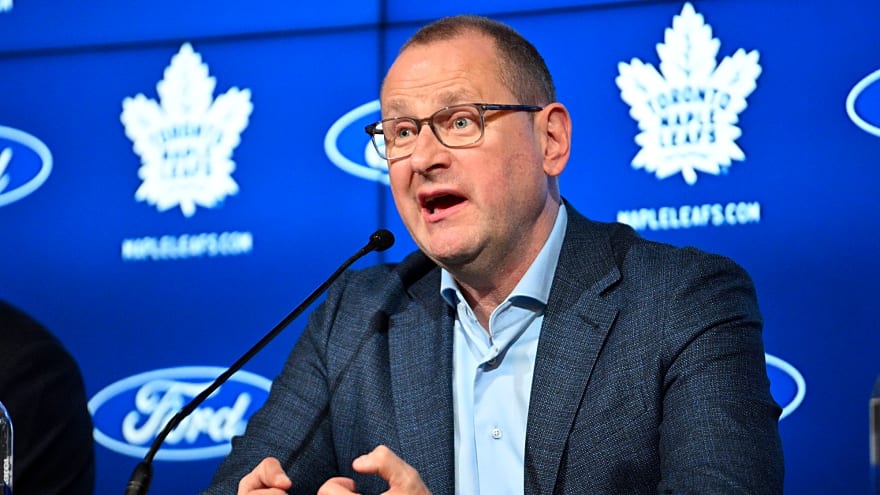
Maple Leafs GM Brad Treliving takes first step toward solutions with honest assessment
Toronto Maple Leafs general manager Brad Treliving took a good first step towards turning around the negative situation in which the franchise finds itself. Treliving held his quarterly news conference at Scotiabank Arena before Tuesday's game against the St. Louis Blues. "As we sit here today, we’re not where we want to be or where we envision to be," he initially said. "Obviously, we’ve underperformed to this point. And I take full responsibility. I’m in charge of the hockey department, and I put the people in place on the ice, off the ice. So, the responsibility lies with myself." Treliving recognized that it is not a problem that warrants simple solutions, and there is a lot of work to do. "There's a lot of areas that need to improve upon," Treliving said, "and my job is working with Craig [Berube], the coaching staff, and our players to get us back going and playing to a level that I believe we’re capable of playing." Bad Treliving's words are a start, but the Maple Leafs now need actions Treliving's public accountability was necessary and is the correct start to improve the situation. His words stabilize the situation by backing the coach in the middle of a five-game losing streak. It also manages the trade expectations. "The reality in the business is that you’re not trading your way out of problems," he said, making it clear that he will not sell the team's future for a quick fix. The following changes must be operational and measurable. Berube now has to redefine the team's defensive structure with straightforward rules of back pressure, DZ exits and coverages in the slot to reduce goals against and expected goals against per 60. It is also necessary to rebalance the new players' minutes, putting them in a position to succeed with teammates and situations where their profile works. They must evaluate specialized use on the second power play unit or PK according to real impact. Although he made it clear that it is not the definitive solution, Treliving will also have to be attentive to the market, looking for pieces with immediate defensive impact without mortgaging premium assets. The Maple Leafs must avoid panic moves and put tactical fit first.

Steelers work out two QBs amid Aaron Rodgers injury
With Aaron Rodgers dealing with a left wrist injury, the Pittsburgh Steelers worked out veteran quarterbacks Jason Bean and Tanner Mordecai on Tuesday, per Pro Football Talk’s Mike Florio. The Steelers currently have three quarterbacks on their 53-man roster and zero on their practice squad. Backup Mason Rudolph, and third-stringer Will Howard will both move up a spot on the depth chart for at least a week, leaving the Steelers without a third option should either of them get injured. Bean, 26, signed with the Colts as an undrafted free agent out of the University of Kansas in 2024. He did not make the 53-man roster, but stuck around on the practice squad for the entire season. He was waived during final roster cuts this year and did not draw practice squad interest from the Colts or any other team. Mordecai is also a 26-year-old who entered the NFL as an undrafted rookie in 2024. Mordecai finished his college career at Wisconsin and signed with the 49ers last spring. He spent the season on San Francisco’s practice squad and was repeatedly cut and re-signed during training camp as the team balanced their other roster needs. He was waived due to injury a final time during roster cuts. The Steelers did not sign Bean or Mordecai, though that could be coming in the next few days as they continue to assess Rodgers’ wrist. They could also work out other available quarterbacks later this week.

Youth movement: Five new players who should be part of Team USA basketball's future
A veteran-heavy USA Basketball squad took home a gold medal last summer in Paris. But their two biggest stars won't be returning. LeBron James and Steph Curry made it clear on the newest episode of "Mind The Game," James' podcast, that they wouldn't be part of Team USA in 2028. That leaves two big pairs of shoes to fill. In addition, the oft-injured Joel Embiid and Anthony Davis are unlikely to be back, Kevin Durant will be 39 in the summer of 2028, Jrue Holiday will be 38 and the national team will get younger. Here are five new players who should be part of Team USA going forward. 1. Amen Thompson, Houston Rockets There's always a spot on Team USA for a hard-nosed perimeter defender, and Amen Thompson is one of the toughest defenders in the NBA. He finished fifth in Defensive Player of the Year voting last season and has upped his assists to 5.2 per game, making him the ideal player to slide into Holiday's stopper/ball handler role. Plus, Thompson is still only 22, which means he has plenty of international basketball ahead of him. And if Team USA needs another elite defender, he's got a connection with one on the Detroit Pistons — his brother Ausar Thompson. The only danger is if the Thompson twins decide to play for Jamaica instead. 2. Cade Cunningham, Detroit Pistons Cade Cunningham, 24, has experience with USA Basketball, winning a gold medal in 2019 at the FIBA U19 championships and leading the USA Select team to scrimmage upsets against the 2023 FIBA Cup team. He only turned down joining the main team because he was recovering from shin surgery. Now he's firmly established as an NBA star, averaging 27.5 points and 9.9 assists for the first-place Detroit Pistons. Not only is he scoring an distributing the ball at an elite level, Cunningham has excellent size at 6-foot-6 and 220 pounds for the more physical international game. 3. Chet Holmgren, Oklahoma City Thunder Team USA needs a rim protector, and they'd love to have one who can stretch the floor like Chet Holmgren. The 23-year-old is shooting 40.4 percent from three-point range this season and 59.1 percent overall while anchoring the NBA's No. 1 defense. Holmgren may not be best suited to banging with some of the huge big men he'd face in the Olympics, like Nikola Jokic and Alperen Sengun, but the threat of his shooting can draw these big men out of the paint and create driving lanes. Plus, he has three years to bulk up before the Los Angeles Olympics. 4. Evan Mobley, Cleveland Cavaliers The reigning Defensive Player of the Year has turned into a legitimate three-point threat this season, sinking 1.7 threes per game, while remaining one of the NBA's best defenders. While Holmgren is more of a shot-blocker and rim protector, Evan Mobley, 24, has the speed and mobility to guard smaller players out on the perimeter, and the height and wingspan to bother big men. In addition, Mobley attended college at USC and high school in famed fight capital Temecula, so he'll be an excellent local choice. 5. Jalen Williams, Oklahoma City Thunder Jalen Williams, 24, is a bulldog defender who showed he can also be an elite big-game scorer during the Thunder's run to the title. Team USA plays best when they can pressure opposing teams defensively, and Williams has been great with that approach for OKC. Honorable mentions Cooper Flagg (18), Dallas Mavericks Stephon Castle (21) and Dylan Harper (19), San Antonio Spurs Kon Knueppel (20), Charlotte Hornets Darryn Peterson (18), Kansas Jayhawks

Dallas Cowboys just got even better at a position they're already looking great at with latest roster move
Dallas Cowboys defensive tackle Kenny Clark found the perfect word to describe the team's defensive tackles during the win over the Las Vegas Raiders: Nasty. It's easy to see why. Clark, Quinnen Williams, and Osa Odighizuwa combined for three sacks and nine quarterback hits. They made plays against the run, too, with three combined tackles for loss and a lot more plays invisible in the eyes of the stat sheet but important nevertheless. Odighizuwa and Williams led the NFL in PFF defensive grades for all defensive tackles for Week 11. It wasn't only nasty, it was scary. And believe it or not, that position group for the Cowboys just got better on Tuesday. The team announced its activated Perrion Winfrey from its Injured Reserve. Winfrey was a preseason standout not expected to make the 53-man roster when he was signed. However, his strong play everywhere on the defensive line earned him a spot on the team, though an injury delayed his season debut until now. In Week 12, he is set to officially join one of the best defensive tackle rooms in the NFL. The Cowboys waived LB Damone Clark to open up a roster spot. Winfrey's activation poses first-world problem for the Cowboys With Winfrey's activation, the Cowboys have six defensive tackles on the 53-man roster, which is considered on the higher side in the NFL. On a 48-man gameday roster, it's difficult to use six spots on defensive tackles. For reference, Dallas has listed at least one defensive tackle as an inactive player every week this season—most times as a healthy scratch. Before it was either Jay Toia or Mazi Smith. Now, the Cowboys might be forced to place Toia—a seventh-round rookie—on the inactives list but he's the only true nose tackle on the team. Even on Monday, he logged 13 defensive snaps. The alternative could be to place Winfrey in the inactives while the room remains healthy. Defensive coordinator Matt Eberflus has a tough decision to make. But anytime you're forced to choose because of having too many good players in one position, it's a first-world problem to have. window.addEventListener('message', function (event) {if (event.data.totalpoll event.data.totalpoll.action === 'resizeHeight') {document.querySelector('#totalpoll-iframe-375').height = event.data.totalpoll.value;}}, false);document.querySelector('#totalpoll-iframe-375').contentWindow.postMessage({totalpoll: {action: 'requestHeight'}}, '*'); This story was originally reported by A to Z Sports on Nov 18, 2025, where it first appeared in the NFL section. Add A to Z Sports as a Preferred Source by clicking here.



